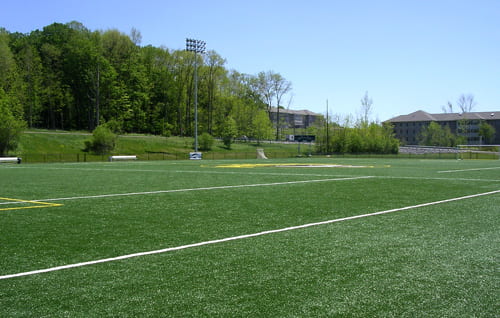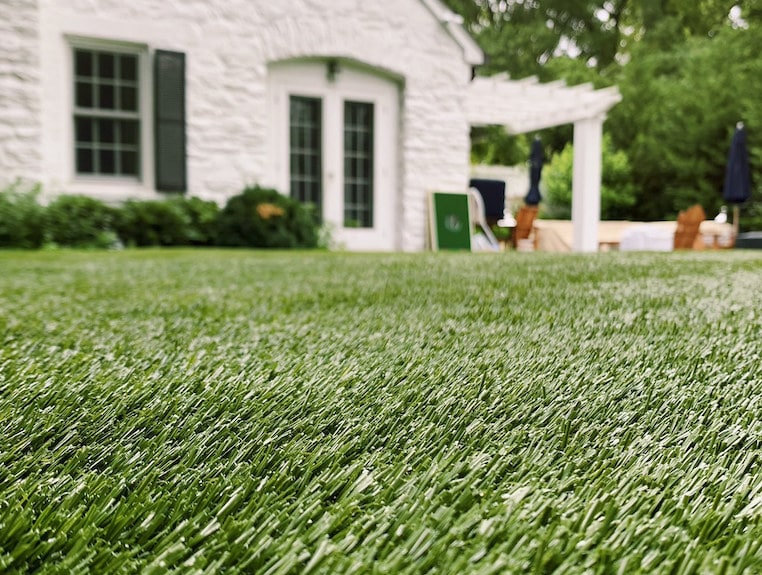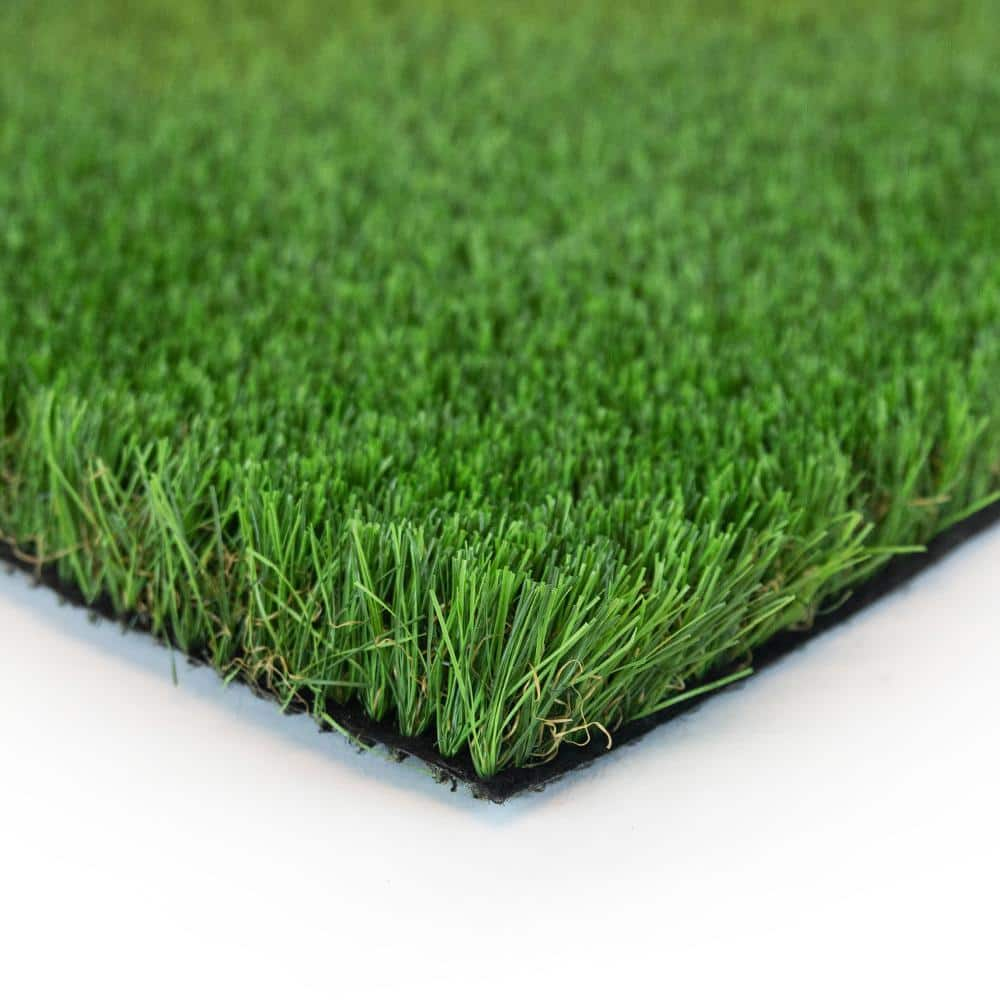See Why Homeowners Prefer Artificial Grass for Lasting Landscaping Practices
As house owners significantly prioritize sustainability in landscape design, synthetic turf has actually arised as an engaging alternative to conventional yard. What stays to be discovered is the complete range of benefits that artificial grass can use to house owners and the setting alike.
Water Preservation Perks
One of one of the most considerable benefits of synthetic grass is its duty in water conservation. Standard yard yards need considerable amounts of water to keep their lush look, frequently leading to overuse of local water resources, especially in arid regions. On the other hand, synthetic grass removes this demand entirely, as it does not require watering. This not only conserves water yet likewise minimizes the stress on municipal water systems, specifically throughout drought problems.
Furthermore, the installment of artificial lawn can contribute to a much more sustainable landscape. Property owners can substantially reduce their water costs, permitting for reallocation of resources to various other environmental efforts or house uses. In addition, synthetic grass is created to stand up to different climatic problems without the requirement for supplemental watering, making it a suitable choice for regions facing water deficiency.
The ecological benefits extend beyond immediate water cost savings. By minimizing water consumption, man-made lawn aids to alleviate the influences of climate modification, protecting crucial ecological communities that are intimidated by too much water removal. As lasting landscaping methods get grip, synthetic grass becomes an accountable choice for homeowners seeking to create environment-friendly outdoor areas.
Lowered Maintenance Efforts
Man-made lawn significantly lowers maintenance efforts compared to standard turf yards. With man-made turf, homeowners can remove the time-consuming tasks associated with all-natural landscape design, such as mowing, feeding, and weeding. This not just saves important time but also lowers physical labor, making lawn care available for people of any ages.
One of the most noteworthy benefits is the lack of routine mowing. Traditional yards call for regular trimming to keep a cosmetically pleasing height, whereas synthetic grass remains continually rich without the need for cutting. Furthermore, homeowners no more need to use pesticides or fertilizers, which are typically needed to maintain natural yard healthy. This shift not only lightens the workload however also advertises a neater, much more consistent appearance year-round.
Moreover, fabricated turf is resilient and resistant, requiring very little upkeep past occasional cleaning and washing to eliminate debris. This convenience of upkeep allows homeowners to appreciate their exterior rooms without the consistent concern of upkeep, giving even more time for leisure and family members tasks. Ultimately, the reduced upkeep efforts associated with synthetic grass make it an appealing alternative for those seeking a low-maintenance, visually appealing landscape.

Ecological Influence Decrease
There is a growing acknowledgment of the ecological benefits connected with synthetic grass, particularly in regards to water preservation and minimized chemical usage. Traditional grass require considerable amounts of water, particularly in drought-prone areas, leading to increased strain on local water resources. In contrast, synthetic grass gets rid of the requirement for watering, considerably minimizing water usage and promoting sustainability.
Furthermore, traditional lawn maintenance frequently involves the application of chemicals, plant foods, and herbicides, which can add to dirt and water air pollution. Man-made grass reduces this environmental threat by calling for very little upkeep and essentially getting rid of the requirement for hazardous chemicals. This not only boosts soil health yet likewise safeguards regional communities from toxic drainage.
Additionally, the production of all-natural lawn lawns typically entails making use of nonrenewable fuel sources for mowing and landscape design equipment, more adding to greenhouse gas emissions. By selecting synthetic grass, house owners can significantly lower their carbon impact associated with grass care tasks.
Aesthetic Allure and Flexibility
In addition to its ecological benefits, synthetic grass supplies significant aesthetic charm and convenience for landscaping. Homeowners can achieve a rich, environment-friendly look year-round, eliminating the seasonal changes frequently connected with all-natural grass. This consistent aesthetic not just enhances the visual charm of a building but also adds to a refined and well-kept appearance.
Furthermore, synthetic grass is offered in a range of designs, colors, and structures, permitting for personalization to match individual choices and layout styles - Turf installation phoenix az. Whether used in residential yards, business areas, or leisure areas, it can seamlessly incorporate More about the author right into diverse landscaping layouts, from modern-day minimal to rich tropical settings
The convenience of fabricated grass prolongs beyond plain appearance; it can be installed in numerous areas, consisting of rooftops, patios, and also indoor spaces, developing chances for unique landscape design options. Furthermore, it is appropriate for a series of tasks, from kids's backyard to pet-friendly settings, offering capability without jeopardizing style.
Inevitably, the aesthetic allure and Check Out Your URL adaptability of man-made turf make it an eye-catching option for home owners seeking lasting landscaping remedies that do not compromise elegance for ecological responsibility.

Long-Term Price Financial Savings
One of one of the most engaging benefits of synthetic grass is its possibility for long-term expense savings. Unlike all-natural turf, which calls for normal maintenance-- including mowing, watering, fertilizing, and parasite control-- synthetic grass substantially minimizes these ongoing expenses. Homeowners can save a considerable quantity on water bills, particularly in regions where water scarcity is a pushing concern. The removal of yard care solutions additionally adds to economic savings, as there is no requirement for specific tools or labor.
Furthermore, synthetic grass has a lifespan of 15 to 25 years, relying on its quality and use. This toughness reduces substitute expenses, making it an extra cost-effective selection over time. The preliminary financial investment in synthetic grass can typically be recouped with the financial savings accrued over time.
While the ahead of time cost might seem greater contrasted to sod installment, the cumulative cost savings from lowered maintenance and water usage usually outweigh these preliminary expenses. Ultimately, the adoption of synthetic grass not only advertises a lasting landscaping service yet additionally offers house owners a monetarily wise option that aligns with long-lasting budgeting objectives.
Verdict
Artificial lawn arises as an engaging choice for sustainable landscape design, supplying considerable advantages in water preservation, lowered maintenance efforts, and lessened ecological effect. As communities increasingly focus on eco friendly techniques, the fostering of synthetic lawn stands for a progressive action toward achieving resilient and try this website lasting landscapes.
Furthermore, artificial lawn is developed to withstand numerous climatic problems without the need for supplementary watering, making it a suitable choice for areas dealing with water scarcity. (Arizona artificial turf)

Man-made grass emerges as an engaging alternative for sustainable landscaping, providing significant benefits in water conservation, decreased upkeep initiatives, and decreased environmental influence.